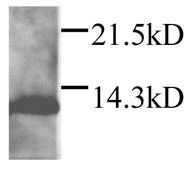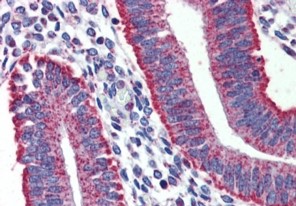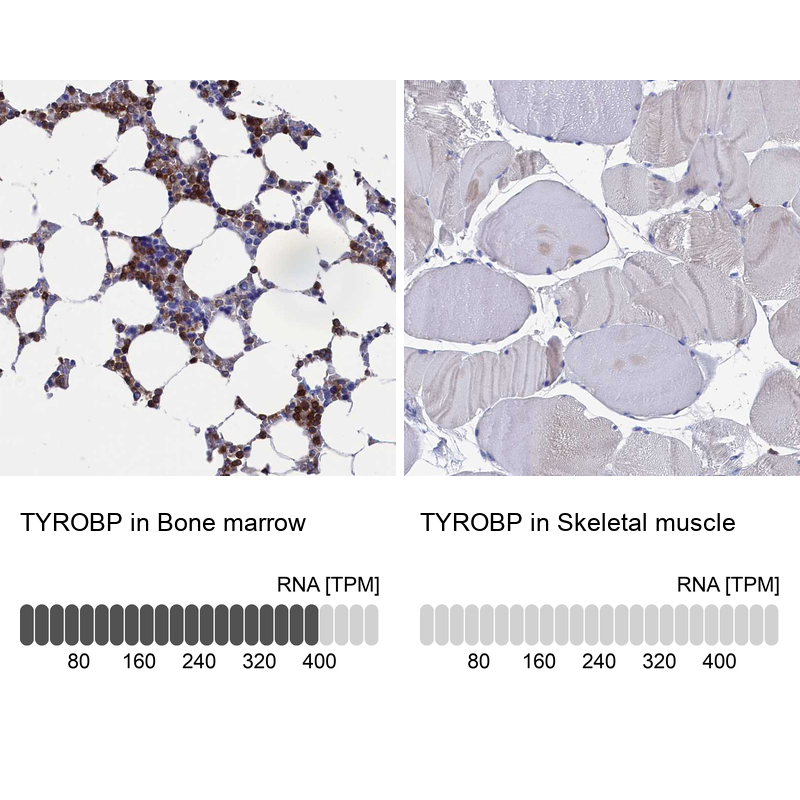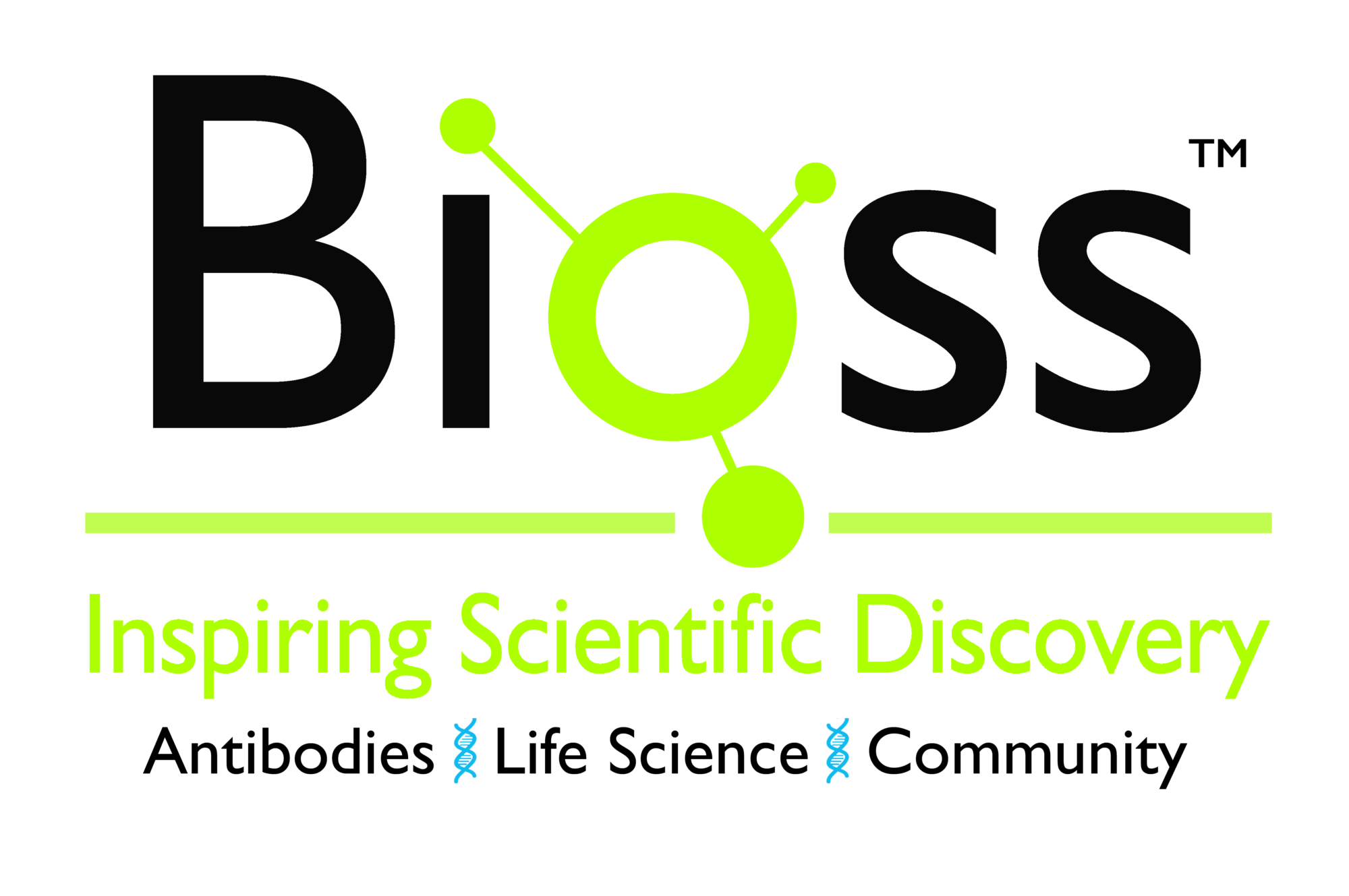
The image on the left is immunohistochemistry of paraffin-embedded Human thyroid cancer tissue using CSB-PA699424(TYROBP Antibody) at dilution 1/30, on the right is treated with synthetic peptide. (Original magnification: x200)
TYROBP Antibody
CSB-PA699424
ApplicationsELISA, ImmunoHistoChemistry
Product group Antibodies
ReactivityHuman, Mouse, Rat
TargetTYROBP
Overview
- SupplierCusabio
- Product NameTYROBP Antibody
- Delivery Days Customer20
- ApplicationsELISA, ImmunoHistoChemistry
- CertificationResearch Use Only
- ClonalityPolyclonal
- ConjugateUnconjugated
- Gene ID7305
- Target nameTYROBP
- Target descriptiontransmembrane immune signaling adaptor TYROBP
- Target synonymsDAP12, KARAP, PLOSL, PLOSL1, TYRO protein tyrosine kinase-binding protein, DNAX adaptor protein 12, DNAX-activation protein 12, KAR-associated protein, TYRO protein tyrosine kinase binding protein, killer-activating receptor-associated protein, polycystic lipomembranous osteodysplasia with sclerosing leukoencephalopathy
- HostRabbit
- IsotypeIgG
- Protein IDO43914
- Protein NameTYRO protein tyrosine kinase-binding protein
- Scientific DescriptionThis gene encodes a transmembrane signaling polypeptide which contains an immunoreceptor tyrosine-based activation motif (ITAM) in its cytoplasmic domain. The encoded protein may associate with the killer-cell inhibitory receptor (KIR) family of membrane glycoproteins and may act as an activating signal transduction element. This protein may bind zeta-chain (TCR) associated protein kinase 70kDa (ZAP-70) and spleen tyrosine kinase (SYK) and play a role in signal transduction, bone modeling, brain myelination, and inflammation. Mutations within this gene have been associated with polycystic lipomembranous osteodysplasia with sclerosing leukoencephalopathy (PLOSL), also known as Nasu-Hakola disease. Its putative receptor, triggering receptor expressed on myeloid cells 2 (TREM2), also causes PLOSL. Multiple alternative transcript variants encoding distinct isoforms have been identified for this gene.
- ReactivityHuman, Mouse, Rat
- Storage Instruction-20°C or -80°C
- UNSPSC41116161






